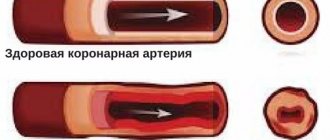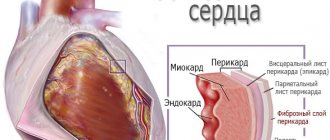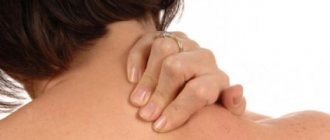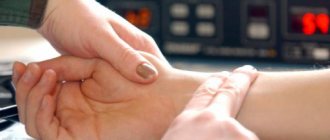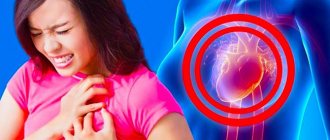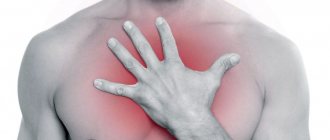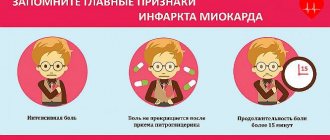Inflammation of the heart muscle has its own Latin term - myocarditis. This is the name for a group of myocardial diseases caused by different types of inflammatory processes. Symptoms of the disease usually appear when the infection is severe. But in recent years, more attention has been paid to allergic and autoallergic myocarditis, which arise from unknown causes and represent a pathological immune reaction of the body.
The prevalence of the disease has no connection with age and gender. Children and the elderly are more seriously ill. For the treatment of myocarditis of infectious origin, there is experience accumulated over two centuries. Autoimmune processes cannot always be dealt with without consequences for the patient.
What types of inflammation are possible in the muscle tissue of the heart?
Morphological and histological processes during myocardial inflammation can occur in three types:
- alternative - degeneration and death (necrosis) of myocytes;
- exudative - the first place comes to the formation of serous or fibrinous fluid (exudate), in which there are large quantities of formed blood elements (neutrophils in sepsis, histiocytic lymphocytes in rheumatism, eosinophils, lymphocytes and plasma cells in allergies);
- productive - join exudation, are expressed in the proliferation of certain groups of cells with the formation of typical granulomas (nodules), an example would be myocarditis in scarlet fever, rheumatism.
Muscle tissue is the parenchyma of the myocardium
Exudative inflammation often accompanies infectious and infectious-allergic processes. Moderate changes of an alternative and exudative nature after treatment disappear irrevocably and leave no traces behind.
In severe cases of the disease with severe intoxication, muscle fibers die. In their place, scar tissue grows. Such lesions can cover the entire myocardium.
Affected:
- or the parenchymal part of the heart tissue (myocytes with fibrils);
- or interstitial - connective tissue membranes in which the coronary and internal vessels pass.
Inflammation is classified according to its prevalence:
- focal - mild course with isolated accumulations of inflammatory elements, when located in the area of conducting pathways, they disrupt conductivity and can contribute to the activation of local automatism with extrasystole;
- diffuse - the myocardium is “studded” with small lesions, numerous scars disrupt the contractility of myofibrils, which threatens the development of heart failure.
In severe infections, inflammation can spread to other layers of the heart - the endocardium and pericardium.
Why does heart inflammation occur?
According to Latin medical terminology, inflammation of the heart muscle is called myocarditis, regardless of the nature of the changes that occur. This pathology occurs equally in different age groups of the population.
May be asymptomatic for a long time. Severe manifestations are characteristic of the severe stage of the disease. The leading role in myocardial damage belongs to infectious invasion.
The inflammatory process, left unattended, can lead to complications that are incompatible with life.
Why does the heart muscle become inflamed?
There are quite a few reasons that contribute to the inflammatory process in myocardial cells. The most extensive group of factors predisposing to disease are infections. Once in the body, they have a detrimental effect on the condition of all organs, including the heart.
Infectious agents causing myocarditis:
- Viral - herpes, influenza, hepatitis, chicken pox, measles, mumps, rubella, cytomegalovirus, adenovirus, parvovirus, Coxsackie virus.
- Bacterial - streptococci, diphtheria bacilli, rickettsia, spirochetes, chlamydia, staphylococci, enterococci, pneumococci, mycoplasma, salmonella.
- Fungal – cause candidiasis, spergilosis, actinomycosis, coccidiomycosis.
- Parasitic - nematodes, roundworms, tapeworm, trichinella.
- Class of protozoa - amoebas, trypanosomes, toxoplasma, schistosomes.
Other causes of heart inflammation:
Allergy. This is the body's reaction to the influence of certain factors. A burn injury causes extensive necrotic processes, which promotes the absorption of toxic elements and destruction products into the blood.
They, in turn, provoke the production of autoimmune particles that attack myocardial cells.
Transplantation of organs or individual tissues can lead to the body’s rejection of a foreign element, which is manifested by an inflammatory reaction.
Pharmacological allergies develop after taking antibiotics, diuretics, antituberculosis drugs, non-steroidal anti-inflammatory drugs, anticonvulsants and antimicrobial drugs.
The introduction of a vaccine or serum, stings of wasps, bees and other insects are also possible causes of the development of myocarditis.
A rare type of allergic reaction - eosinophilic inflammation of the heart muscle, occurs against the background of allergic skin diseases, bronchial asthma, or sudden cessation of adrenocorticotropic hormone.
Rheumatism. Rheumatic carditis (acute rheumatic fever) occurs under the influence of an infectious pathogen (hemolytic streptococcus).
In this case, an autoimmune reaction of the body develops: the immune system produces antibodies that attack the heart tissue.
Myocarditis of rheumatic origin is separated into a separate group, since its etiology is determined by two factors at once: autoimmune and infectious.
Toxins. Penetrating into the body, they affect the heart along with other internal organs. Among the sources of toxic elements are the following: alcohol, uremia in renal failure, carbon monoxide, medications taken in high doses, the presence of arsenic, lead, cocaine, and excess thyroid hormones in the body.
Radiation. Ionizing radiation is used as a treatment for cancer. If the chest area is exposed to radiation (for a breast tumor, for example), the heart can also be affected by radioactive rays. Signs of inflamed heart muscle in this case may appear after a long period of time (even after 10 years).
Autoimmune diseases. These include, first of all, systemic lupus erythematosus, scleroderma, and rheumatoid arthritis.
Autoimmune diseases are often accompanied by myositis (inflammation of muscle tissue of any location and etiology). Myocarditis is a type of such pathology.
All these conditions are united by an abnormal reaction of the immune system, the antibodies of which mistake the cells of one’s own body for foreign elements and begin to fight them.
These factors influence the development of myocarditis in both adults and children. But small patients are at greater risk, because heat exchange reactions in this category (especially in newborns) are in the formative stage.
Electric shock. Causes serious damage to the heart muscle, including myocarditis. Possible fatalities.
The idiopathic form of the disease (name - Abramov-Fiedler myocarditis) is diagnosed when it is not possible to establish the exact cause of heart inflammation.
Distinctive features: rapid progression leading to significant stretching of the heart chambers, acute course with severe symptoms, serious condition of the patient. Prognosis: death from heart failure or an attack of arrhythmia.
How does pathology manifest itself?
Signs of myocarditis (especially of an infectious nature) do not always appear immediately. Up to 8 weeks after the illness, a person may not be aware of the pathological processes occurring in the heart muscle. Therefore, having recovered from a sore throat, flu, or acute respiratory infection, it would not be amiss to check this vital organ for the presence of inflammation.
At the initial stage of the disease, a person may complain of a constant loss of strength. As myocarditis progresses, inflammation of the heart muscle is indicated by symptoms:
- the skin takes on a white tint;
- cyanosis of the extremities and nasolabial triangle is noticeable;
- shortness of breath that occurs with slight physical exertion;
- legs swell;
- possible cough and pain in the right hypochondrium;
- rise in body temperature;
- there may be pain in the joints;
- attacks of night suffocation;
- migraines, dizziness;
- decreased blood pressure;
- pulsating veins of the cervical region;
- the rhythm of the heartbeat is disrupted;
- when listening, heart murmurs are detected;
- pain localized in the chest (heaviness, burning, squeezing, tingling);
- increased sweating.
For the severity of symptoms, the area of myocardial damage matters: focal or diffuse. In the second case, the disease is more severe.
Traditional treatment of pathology
Considering the multifactorial etiology of the disease, therapeutic measures should be organized depending on the cause that caused the inflammatory process. The main method is drug therapy offered by official medicine. Home methods for improving the heart muscle are well complemented by medicinal effects.
Drug therapy includes the following areas:
- Fighting the pathogen.
Chronic sources of infection in the body are often caries and tonsillitis, prostatitis and sinusitis, as well as various abscesses.
Therefore, the first step towards eliminating pathogenic flora should be the sanitation of the sources of inflammation. In addition, the patient is prescribed a course of antibiotics (cephalosporins, fluoroquinolones, macrolides).
To treat autoimmune and allergic disorders, drugs containing hormones are used.
- Reducing the inflammatory process.
Taking immunosuppressive drugs is mandatory for severe stages of the disease and in the treatment of autoimmune myocarditis. Such medications include glucocorticosteroids “Metypred”, “Prednisolone”, “Dexamethasone”.
In other cases, it is advisable to use non-steroidal anti-inflammatory drugs: Ibuprofen, Ibusan, Diclofenac, Voltaren.
Antihistamines are used for severe allergy symptoms (Tavegil, Suprastin, Delagil).
- Relieving symptoms of myocarditis.
It is carried out with antiarrhythmics, coronary lytics, hypertensive drugs, anticoagulants, diuretics, cardiac glycosides, antipyretic drugs.
- Elimination of metabolic disorders.
To maintain the heart during such a difficult period, substances are needed that improve metabolic processes and provide additional nutrition to the myocardium. All this can be provided by vitamins, as well as drugs called: Mexicor, Riboxin, ATP, Asparkam, Potassium Orotate, Panangin, Mildronate.
Traditional medicine: simple recipes
The infusion is prepared as follows: pour boiling water over the inflorescences and brew for an hour. Take two tablespoons of herb per 300 ml of water. Take three times a day (1 tablespoon) after meals, be sure to wash it down with milk. Lily of the valley.
Method for preparing the tincture: fill any container with flowers to the top, add alcohol (90%), leave in the dark in the cold for 7 days. You should drink 20 drops per dose. There should be three doses per day. You can mix three tinctures: lily of the valley, valerian, motherwort.
Plant seeds in an amount of 3 g are taken three times a day (before meals) along with warm water. The break between eating and taking the medicinal product should not exceed 30 minutes.
Ingredients: crushed lemon seeds (a glass), grated figs (100 g), honey (200 ml), vodka (50 g).
It’s easy to prepare: mix everything and refrigerate.
Take a teaspoon after each meal.
Another option for a mixture to restore the functioning of the cardiovascular system.
Ingredients: lemons (2 pcs.), figs (100 g.), honey (200 ml.), fortified wine (half a glass).
Preparation: chop and mix everything, store in the refrigerator.
Application: a tablespoon three times a day.
To prepare a medicinal potion, you need to take several bushes of the plant along with the roots, chop and brew. Drink the drink instead of tea several times a day. The course of such treatment should last one month.
This can be called a herbal remedy for strengthening the heart. It has an effective anti-inflammatory effect.
Ingredients of the collection: mint leaf (20 g), adonis inflorescences (20 g), dill seeds, juniper fruits, motherwort (take a tablespoon of all ingredients), valerian, oregano (two tablespoons each).
Preparation: pour 500 ml of boiling water over a tablespoon of the collection, then cook for several minutes. The infusion can be used every other day.
Consumption: half a glass of drink shortly before meals three times a day. Course – 21 days.
Mix birch sap (250 g), juice squeezed from one lemon, add a tablespoon of honey. You should drink the elixir several times a day for two weeks.
Combine onions, dried apricots, and lemons in one composition. Take all ingredients in an amount of 0.5 kg, grind thoroughly, using a meat grinder. Leave in a cold place for 7 days.
The therapeutic effect is achieved by dissolving the product in the mouth for several minutes. One dose is equal to a tablespoon. Repeat the procedure three times a day before meals. Continue treatment until the mixture is completely used up. Then take a break for 2 months and do everything again.
Causes of myocardial inflammation
For reasons, myocarditis is divided into:
- infectious,
- non-infectious.
Viral inflammation of the myocardium: myofibrils are destroyed, accumulations of microorganisms are visible
Among infectious agents that can cause myocarditis, the first place in cardiotropism (heart damage) belongs to viruses:
- coxsackie - found in half of the victims;
- influenza - more often in older patients;
- ARVI;
- measles
Bacterial myocarditis takes second place in the frequency of lesions:
- hemolytic streptococcus - the causative agent of rheumatism;
- diphtheria bacillus;
- Mycobacterium tuberculosis;
- causative agents of typhoid and paratyphoid fever;
- scarlet fever:
- septic infections.
Pathological microorganisms are:
- rickettsia;
- mushrooms;
- spirochetes.
During the bacteriological study, the influence of two or more pathogens was noted, which share functions: one causes a general infection and blocks the body’s defenses, the other selectively affects the myocardium.
In acute tonsillitis, the cause of myocarditis can be a focal infection of the oral cavity (carious teeth), nasopharynx (chronic sinusitis, rhinitis).
The group of non-infectious myocarditis includes:
- allergic and infectious-allergic types of disease;
- toxic - occur when the myocardium is exposed to toxic substances.
As a manifestation of allergies, myocarditis occurs when there is an excessive immune response to an irritant. It may be a reaction to:
- medicine (the most dangerous are antibiotics, Novocaine, sulfonamides, catecholamines, Spironolactone, Amphetamine, Methyldopa);
- administered vaccine or serum;
- burn;
- a bite of an insect;
- tissue and organ transplantation.
A rare type of inflammatory reaction is eosinophilic myocarditis. Infiltration occurs:
- against the background of skin diseases (dermatitis);
- for bronchial asthma;
- after abrupt withdrawal of corticosteroids in the treatment of various diseases.
Toxic lesions are typical for:
- poisoning;
- renal and liver failure;
- alcoholism;
- excess thyroid hormones;
- drug overdose due to inadequate treatment.
Causes
Myocarditis is characterized by a set of morphological changes of an inflammatory nature in the tissue of the heart muscle. The severity of pathological processes depends on numerous circumstances, including the area of localization of the lesion, the degree of myocardial damage and provoking factors.
There are numerous reasons that trigger the inflammatory process of the heart muscle.
| Name | Causes |
| Infectious myocarditis |
|
| Non-infectious myocarditis |
|
Causes of inflammation of the heart muscle
In most cases, inflammation of the heart muscle in adults and children occurs against the background of colds. Pathogenic microorganisms penetrate the myocardial tissue and, with their negative influence, provoke an inflammatory response in the body.
There are secondary sources that contribute to the development of pathological processes:
- taking toxic medications;
- ionizing radiation;
- connective tissue diseases (vasculitis, rheumatism, systemic lupus erythematosus);
- great physical activity;
- hypothermia of the body;
- prolonged stress, emotional outbursts, overstrain;
- lack of vitamins in the human body;
- hereditary predisposition;
- period of bearing a baby;
- dehydration.
Inflammation of the heart muscle (symptoms in adults will help the attending physician make a preliminary diagnosis) can also provoke thyrotoxicosis and uremia. People aged 30-40 years are in the risk category. In most cases, the disease occurs under the guise of an infectious pathology, so few people pay attention to the nature of the clinical signs.
Features of rheumatic myocarditis
Rheumatic myocarditis stands apart among all myocardial inflammations. Although caused by infection, an autoimmune response has been proven to play a role.
It has characteristic differences from other types:
- almost always accompanied by endocarditis with damage to the heart valves;
- associated with a primary streptococcal infection, symptoms appear after a latent period 2 weeks after a sore throat, acute nephritis;
- most often affects children and adolescents;
- the morphological substrate is specific granulomas (Ashof-Talalaev nodules);
- the location of granulomas is most often found in the posterior wall of the left atrium and in the papillary muscle of the left ventricle;
- accompanied by damage to other organs and tissues (joints, nervous system);
- has a chronic course.
Idiopathic Abramov-Fiedler myocarditis etiology remains unclear. It has a very severe acute course. Rapid development of decompensation with pronounced expansion of the cavities of the heart. The patient dies from heart failure or rhythm disturbances.
Symptoms
Symptoms of myocarditis are universal, since myocardial damage, regardless of the cause, equally affects contractile function, conductivity and excitability.
Read more about the properties of the heart muscle in this article.
Most often patients complain of:
- weakness;
- shortness of breath and palpitations during physical exertion;
- sensation of arrhythmia, strong heartbeats during extrasystoles;
- pain in the heart of an aching, dull nature, not associated with exertion and not having the nature of attacks;
- prolonged low temperature;
- increased sweating.
Bradycardia (more often with diphtheria, influenza) is an unfavorable symptom. Indicates damage to the sinus node or a sharp violation of atrioventricular conduction.
Severe weakness makes a person lie down more
Rarely, “flying” intermittent pain in large joints is possible.
Severe course is accompanied by:
- attacks of suffocation;
- dizziness;
- bluishness of the face.
In myocarditis, the right ventricle is the first to suffer because its muscle is weaker and thinner.
Upon examination, the doctor discovers:
- expanded boundaries of relative cardiac dullness;
- swelling of the veins in the neck;
- systolic murmur on auscultation;
- arrhythmia of the pulse, its weak filling.
The addition of left ventricular failure is accompanied by moist rales in the lungs, swelling in the legs, and accumulation of fluid in the pleural cavity.
The course of the disease is most often acute and subacute. Rheumatic myocarditis involves a chronic process with “attacks” during exacerbation and remissions.
Types and symptoms of inflammation of the heart muscle
Inflammation of the heart muscle in adults is distinguished in medicine according to the following classification:
| Name | Description |
| Acute myocarditis of the heart | Symptoms of the disease manifest themselves acutely, heart failure gradually progresses. |
| Rheumatic myocarditis | Pathological processes develop against the background of autoimmune diseases. |
| Infectious myocarditis | Inflammation is caused by bacteria and viruses. Symptoms of infectious myocarditis depend on the patient’s body. Mild signs or severe manifestations of heart failure may be present. |
| Chronic myocarditis | Inflammation of the heart muscle is characterized by periodic relapses with painful sensations present. |
Regardless of the form of myocarditis, pathological processes trigger autoimmune disorders when the human body's immune system produces antibodies. Cells attack cardiac tissue, mistaking them for foreign microorganisms. An inflammatory reaction develops.
A person develops general clinical symptoms:
- general fatigue in the body, fatigue;
- shortness of breath, even after minor physical activity;
- aching pain syndrome in the heart area, which indicates a rhythm disturbance;
- heartbeat increases;
- blood pressure decreases;
- sweating increases;
- joint pain appears;
- the skin turns pale;
- the tips of the fingers, nose and earlobes become bluish;
- lower limbs swell;
- urine volume decreases;
- body temperature rises slightly;
- heaviness and pain in the right hypochondrium;
- The veins in the neck dilate.
A person is worried about discomfort in the chest area on the left side. There are different types of painful sensations. But the symptoms of myocarditis do not appear in all people; in some situations they are mild or completely absent.
Peculiarities of the clinic in childhood
You can also read: Minor changes in the myocardium
In children, myocarditis is often caused by ARVI viruses and childhood infections. Among the symptoms, pay attention to the following:
- child's refusal to eat;
- vomiting;
- cyanosis of lips and face;
- shortness of breath;
- poor sleep;
- fainting states.
Severe acute course can lead to the formation of a protrusion in the upper part of the chest due to increased heart beats on the non-ossified ribs (heart hump).
Features of the clinical picture and course of the disease in various infections
The manifestations of infectious inflammation of the myocardium are influenced by the strength of the pathogen, the state of the patient’s immunity, and individual compensatory capabilities.
With diphtheria, both the “working” muscles of the myocardium and the conduction pathways are affected. Toxins cause cell necrosis and hemorrhages under the endocardium. The clinic develops in the second week of the disease. The more pronounced the bradycardia, the deeper and more widespread the lesion. The myocardium “activates” the protective mechanism of automatism. At the same time, nerves and blood vessels are affected.
Typhus “selects” small vessels, including the coronary arteries, and begins as vasculitis with inflammation in the surrounding tissues. Primary disturbances in cerebral vascular tone and a sharp drop in blood pressure. Myocarditis occurs secondary.
Typhoid fever is rarely accompanied by myocarditis in the third week of the disease. The myocardium changes along the path of fatty degeneration and dystrophy. Classic symptoms occur after a decrease in temperature and are post-typhoid in nature.
With scarlet fever, the morphology of tissue changes has a different form: from fatty degeneration to the formation of specific granulomas. The transverse striation of myofibrils disappears. Clinically, it occurs in accordance with the general manifestations.
Influenza - heart damage occurs after a decrease in temperature and intoxication.
Some researchers believe that the flu can be equated to diphtheria myocarditis in terms of its effect on the heart.
Considering the tendency of influenza viruses to damage the heart with severe atherosclerosis of the coronary vessels in older people, it is recommended to adhere to longer bed rest in treatment.
During lobar pneumonia, focal inflammation develops against the background of impaired blood flow to the right ventricle, insufficient filling of the left ventricle and coronary vessels. The process in the lungs complicates the outflow and saturation of oxygen. Therefore, circulatory failure develops much faster.
Diagnosis of infectious myocarditis
The main diagnostic criterion for myocarditis is the detection of an inflammatory process against the background of signs of cardiac dysfunction. Data from basic research methods and deviations from the norm that can be identified:
- The appearance of complaints after an infectious disease.
- On examination - swelling of the neck veins, edema, congestion in the lungs.
- ECG – arrhythmia, extrasystole, frequent contraction rhythm.
ECG: Sinus tachycardia with nonspecific ST segment changes
- EchoCG - the cavities are dilated, the contractile function of the heart is low.
- Biochemistry and immunology of blood - increased gamma and alpha globulins, antibodies to the myocardium, C-reactive protein, ALT and AST activity. Blood culture can identify the causative agent of the disease.
- X-ray examination - the cardiac shadow is enlarged in size, pulmonary congestion.
On the radiograph: A - increase in heart size with increased pulmonary pattern in infectious myocarditis; B — result after treatment.
- Probing with cardiac biopsy – information content is about 35%, signs of focal inflammation.
- Scintigraphy - detects signs of an inflammatory reaction.
- MRI is the most evidence-based method; changes in the structure of the muscle layer are visible - swelling, localization of lesions.
Diagnostics
Diagnostically identifying inflammation of the heart muscle is difficult when the disease is latent. Patients often find it common to develop weakness after an infection.
When examining and interviewing a patient, the doctor should specifically ask about the symptoms of myocarditis. The above manifestations of heart failure clearly indicate a connection with heart disease, and the acute nature emphasizes the role of infection or other factors.
A blood test reveals:
- leukocytosis;
- shift the formula to the left;
- increase in ESR;
- significant increase in eosinophils.
Among the biochemical tests you should pay attention to:
- excess of the norm of gammaglobulins, immunoglobulins;
- the presence of C-reactive protein, seromucoid;
- growth of sialic acids and fibrinogen.
Bacteriological blood culture helps identify the pathogen.
If an allergy is suspected, an antibody titer test is prescribed.
X-rays can reveal expansion of the cavities of the heart and congestion in the lungs.
Atrioventricular block together with other signs can be considered a symptom of myocarditis; after treatment, conduction is restored
ECG signs include various conduction disturbances (blockades), acute rhythm changes, and ventricular overload.
Ultrasound confirms a violation of the contractile function of the myocardium and accurately indicates a change in the size of cavities and valves.
Rarely, in severe cases with unclear reasons, they resort to a biopsy of heart tissue.
Forms of infectious myocarditis
The disease can have several clinical variants, which depend on the severity of the infectious lesion, the state of the body's immune system and the reserve capabilities of the heart muscle.
Transient
In the heart muscle, many areas are simultaneously affected by microorganisms and the toxins they secrete, and the cells are destroyed. There are symptoms of a decrease in the contractility of the heart with the development of a state of shock and edema of the pulmonary tissue. With complete treatment, complete restoration of myocardial function is possible.
Acute
Foci of inflammation are located in isolation, their total area is small. Clinical manifestations of circulatory failure. After recovery, the structure of the muscle layer of the heart may not completely return to its previous state.
Types of acute myocarditis. A: Acute lymphocytic myocarditis with focal inflammatory cell infiltrates (black arrow) and cardiomyocyte necrosis. B: Sarcoidosis with myocardial involvement, showing features of granuloma (black arrow). C: Giant cell myocarditis with the presence of multinucleated giant cells (yellow arrows). D: Eosinophilic myocarditis.
Chronic
After the acute or transient process subsides, signs of low-grade inflammation remain in the heart tissue. In their place, connective tissue develops over time, cardiomyopathy occurs with a decrease in the ability of the heart to carry out full contractions, congestion in the lungs and venous network.
Infectious-toxic
Occurs when the myocardium is exposed to toxins released by infectious agents.
The most common cause is diphtheria. It may be a reaction to vaccination against this disease. Diphtheria toxin is a toxic substance that is similar in aging to cytochrome, so it is integrated instead into metabolic processes, which disrupts cellular respiration and leads to the destruction of cardiomyocytes.
Necrosis in the heart muscle causes ventricular fibrillation and acute circulatory failure. After recovery, pockets of sclerotic tissue remain throughout the myocardium.
Infectious-allergic
Microorganisms cause the formation of antibodies to their own myocardial cells. Complexes that are fixed in the muscle lead to the release of compounds such as prostaglandins, histamine, and enzymes from cell lysosomes. In the heart tissue, vascular permeability and swelling increase, foci of hemorrhage occur, and oxygen starvation increases.
Treatment of myocarditis
When treating myocardial inflammation, drugs are prescribed that can kill or sharply weaken infectious agents. At the same time, complications such as arrhythmias and heart failure are treated (prevented).
Bed rest will be required for a period of one week to one and a half months.
A patient in a hospital is prescribed oxygen inhalation.
The diet limits table salt, liquids, and spicy foods.
For anti-inflammatory purposes the following is used:
- antibiotics;
- corticosteroids;
- non-steroidal drugs;
- salicylates.
For viral etiology:
- antiviral agents;
- immunomodulators to stimulate self-defense.
According to indications, you may need:
- cardiac glycosides;
- antiarrhythmic drugs;
- coronary agents to dilate coronary vessels;
- vitamins;
- agents that support metabolism in myocardial cells (Panangin, Mildronate).
For the treatment of autoimmune and allergic processes the following is used:
- antihistamines;
- large doses of corticosteroids;
- immunosuppressants that suppress excessive reactions.
For idiopathic myocarditis, cure is possible only by transplanting a donor's heart.
Vaccination against influenza is carried out with the Russian vaccine "Grippol"
Mechanism of occurrence
The etiological mechanism of myocarditis is associated with exposure to infectious, toxic and allergic factors. The most common cause of the disease is viral and bacterial infection. The culprits of the inflammatory reaction of the myocardium are infectious diseases such as scarlet fever, pneumonia, diphtheria, chickenpox, influenza, measles, and rubella. It should be noted that the main culprits are considered to be viruses: influenza, measles, hepatitis, mononucleosis, adenoviruses. However, quite often the causes can be associated with bacteria, parasitic microorganisms, fungi, and protozoal infections.
Among the causes of non-infectious myocarditis are the following agents:
- chemical toxins (carbon tetrachloride is the most dangerous);
- medicines (cytostatics, sulfonamides, some antibiotics);
- substances that can cause internal burns and tissue breakdown of muscles and blood vessels.
Of the external influences as provoking factors, it is necessary to note: excessive physical activity, poor environment and industrial emissions, stress, poor diet, alcohol abuse, hypothermia, genetic predisposition.
Prevention
Myocarditis of infectious origin can be prevented by general hardening procedures that increase immunity. To exclude severe infections, vaccinations are carried out from childhood.
Before suspected influenza outbreaks, it is important to get vaccinated, especially for older people.
People with allergies should avoid the use of vaccines, serums, and unclear medications, and stick to known and proven foods in their diet.
You should not suffer infections “on your feet” or interrupt bed rest. It is necessary to pay attention to the appearance of cardiac symptoms against the background of general recovery.
The inflammatory process in the myocardium causes scar tissue changes in the absence or improper therapy. Subsequently, it will manifest itself as cardiosclerosis, dystrophy and early heart failure. Therefore, it is so important to undergo timely treatment.
Therapeutic procedures
Diagnosis and treatment of inflammation of the heart muscle is carried out by a cardiologist. The method of therapy is prescribed in accordance with the form of the disease, severity, and clinical manifestations. As a rule, treatment is carried out in an inpatient setting. Outpatient therapy is possible for mild forms of myocarditis.
Traditional treatment
The main method of therapeutic intervention is the prescription and administration of medications. It is used to eliminate the causes of the disease and symptomatic manifestations of myocarditis.
Directions of drug treatment:
- Elimination of provoking factors of inflammation.
- Decreased secretion of exudate.
- Maintaining normal heart activity.
- Antibacterial effect in the area of inflammation.
For forms of myocarditis that are not accompanied by severe aggravating symptoms, drug therapy is rarely prescribed. To normalize the condition, the patient should limit physical activity, rest, and also adjust their diet by eliminating foods that contribute to intoxication of the digestive system.
Drug treatment options:
- Antibiotics are prescribed for infectious forms of myocarditis. The drugs help stop the growth of the inflammation focus and prevent the transition to the purulent stage. Used only for their intended purpose in the absence of contraindications or restrictions.
- Antiviral drugs are actively used to treat infectious myocarditis. Medicines are prescribed that act against a wide range of viral microorganisms. At the same time, medications that have an immunostimulating effect are taken.
- Hormonal drugs. Corticosteroids have a pronounced anti-inflammatory effect. Because of this, they are often used to treat myocarditis.
- Antihistamines are effective for allergic forms of myocardial inflammation. The action is aimed at stopping the immune reaction, accompanied by the release of histamine and the further development of edema. Antiallergic drugs block the functioning of receptors responsible for the formation of an allergic reaction. Therefore, medications can be used for prophylactic purposes.
If there is no positive effect from taking medications, or if there is a risk of complications, surgical treatment is prescribed. It involves a heart transplant, which is a complex and dangerous operation. The patient is then forced to take medications throughout his life to prevent organ rejection.

